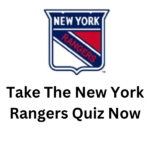The Detroit Red Wings are one of the original six teams of the National Hockey League (NHL) and have a rich history that spans over 90 years. Founded in 1926, the Red Wings quickly became a dominant force in the NHL, winning their first Stanley Cup championship in 1936.
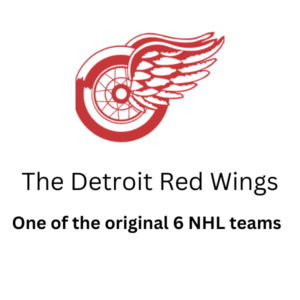
During the 1940s, the Red Wings continued to be a powerhouse in the league, winning another three Stanley Cup championships in the decade. The team was led by legendary players such as Gordie Howe, Terry Sawchuk, Ted Lindsay, and Red Kelly. Howe, in particular, is considered one of the greatest players in NHL history, having won four Stanley Cup championships and six Hart Trophies as the league’s most valuable player.
The Red Wings continued their success into the 1950s, winning two more Stanley Cups in 1952 and 1954. In 1957, the team moved from the Olympia Stadium to the newly built Joe Louis Arena, which would become their home for the next 38 years.
The team had a bit of a drought in the 1960s and 1970s, but they rebounded in the 1980s with key additions to their roster. Players like Steve Yzerman and Nicklas Lidstrom helped lead the team back to the top of the league, winning three Stanley Cups in 1997, 1998, and 2002. During this time, the Red Wings also established one of the best rivalries in sports, facing off against the Colorado Avalanche in what became known as the “Blood Feud.”
In 2017, the Red Wings moved to the Little Caesars Arena in downtown Detroit, ending their tenure at Joe Louis Arena. While the team has struggled in recent years, they remain one of the most storied franchises in the NHL, with 11 Stanley Cup championships and a legacy of greatness that continues to inspire fans around the world.
Today, the Red Wings are in the midst of a rebuilding phase, with a young core of players looking to bring the team back to prominence. With a commitment to hard work, team chemistry, and a winning culture, it’s only a matter of time before the Detroit Red Wings once again become a dominant force in the NHL.
The Detroit Red Wings Mascot: An Iconic Symbol of Motown
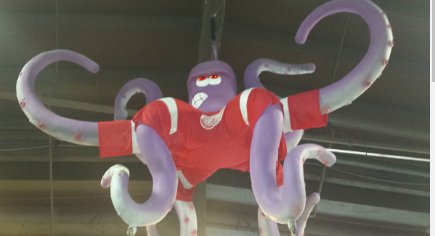
Detroit may be known for its musical roots and automotive industry, but sports fans around the world know that the city is home to one of the most successful hockey teams in the history of the NHL: the Detroit Red Wings. While the team’s success can be attributed to its talented players and passionate fan base, the team’s mascot, known as “Al the Octopus,” has become an iconic symbol of Motown hockey culture.
The story of Al the Octopus begins in 1952, during the Red Wings’ playoff run. Two Detroit brothers, Pete and Jerry Cusimano, brought an octopus to the game and threw it onto the ice. The eight legged octopus symbolize the number of wins needed to win the cup. The team went on to win the Stanley Cup that year, and the tradition of throwing octopuses onto the ice continued.
In 1995 that Al the Octopus made his debut. Al quickly became a beloved figure among Red Wings fans, and his presence at games helped to ignite the energy of the crowd.
In addition to his role as a hype man, Al has become an ambassador for the Red Wings organization. He often makes appearances at community events, schools, and hospitals, bringing smiles to fans of all ages. Al has also been known to participate in charity events and fundraisers, using his fame as a mascot to support worthy causes.
The Detroit Red Wings and their mascot, Al the Octopus, have become an iconic symbol of Motown culture. From his humble beginnings as a symbol of the team’s persistence, to his role as a beloved figurehead and ambassador for the team, Al has helped to cement the Red Wings’ place in hockey history. As the team continues to evolve and grow, Al remains a constant reminder of the passion and dedication of Red Wings fans around the world.
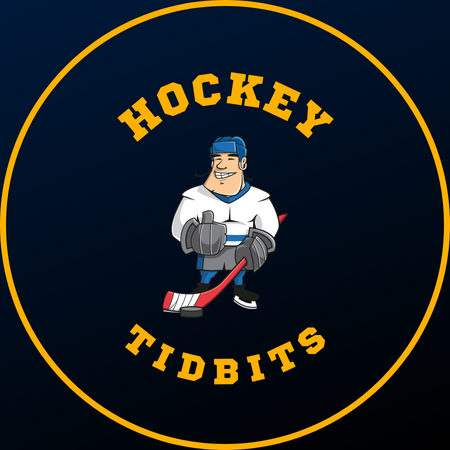
The Detroit Red Wings is one of the most well-known and successful professional ice hockey teams in North America. Founded in 1926, the team has won numerous championships, produced numerous legendary players, and has earned a legion of fans both in Detroit and around the world.
One fascinating trivia about the Detroit Red Wings is that they were originally named the “Detroit Cougars.” However, in 1932, team owner James Norris bought the financially struggling Victoria Cougars of the Western Hockey League and brought them into the National Hockey League. He renamed the team the Red Wings in honor of the motor company owned by his family. The red wheel logo that the team uses today was originally introduced in 1932.
The Red Wings have a storied history that includes numerous hall-of-famers, including Gordie Howe, Ted Lindsay, Steve Yzerman, and Nicklas Lidstrom. Gordie Howe spent his entire NHL career as a Detroit Red Wing, playing for them from 1946 to 1971. During his time with the team, he won four Stanley Cup championships and six Hart Trophies as the NHL’s most valuable player.
The 2001-2002 season was particularly memorable for Red Wings fans as the team dominated the league, finishing with a record of 51 wins, 17 losses, and ten ties. They went on to win the Stanley Cup, defeating the Carolina Hurricanes in five games. That same year, Steve Yzerman, also known as “The Captain,” won the Conn Smythe Trophy as the most valuable player in the playoffs.
In recent years, the Red Wings have struggled to maintain their previous success. However, there’s no denying the team’s rich history and the impact it has had on the sport of ice hockey. Detroit Red Wings fans continue to pack the stands, showing their unwavering support for their team even through the tough times.
In conclusion, the Detroit Red Wings have an incredible legacy that has been built up over almost a century. From the early days when they were the Cougars to the glory days of Gordie Howe, Steve Yzerman, and the 2001-2002 Stanley Cup champions, this is a team steeped in tradition, success, and fan loyalty. Today, Red Wings fans continue to proudly wear their team’s colors, chant “Let’s go Red Wings!” at games, and uphold the team’s legacy as one of the greatest ice hockey teams in history.
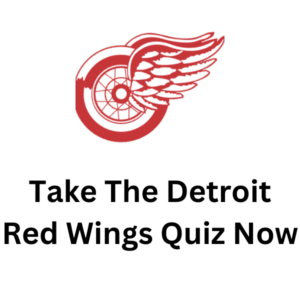
Thanks for your time. Please leave comments and questions below.




